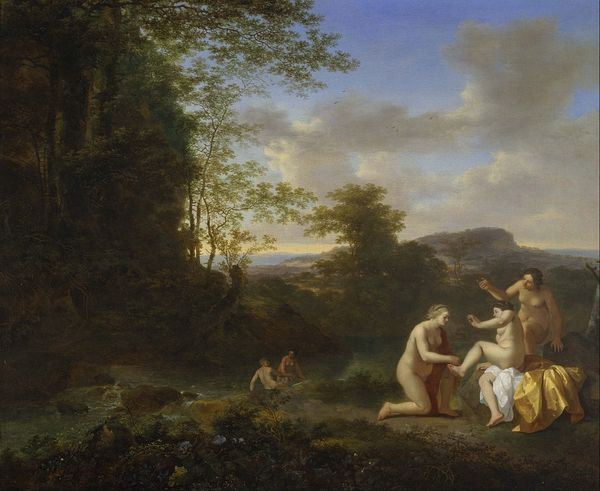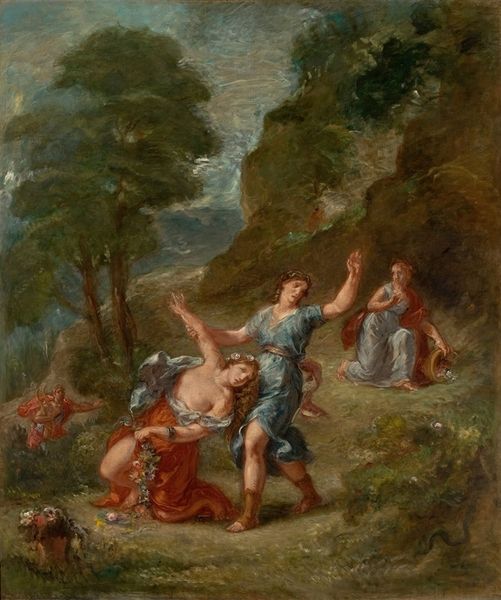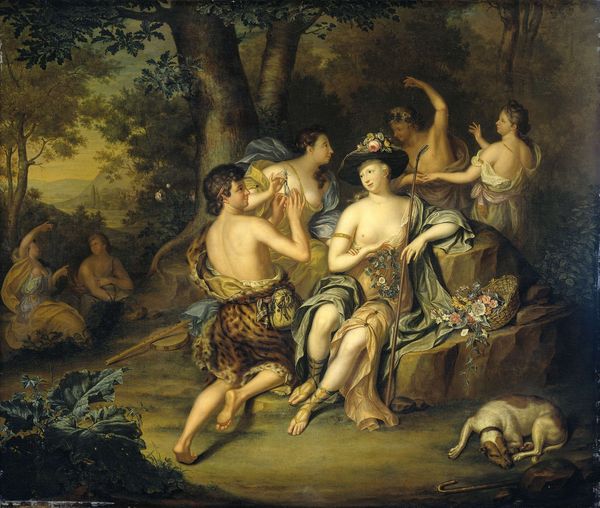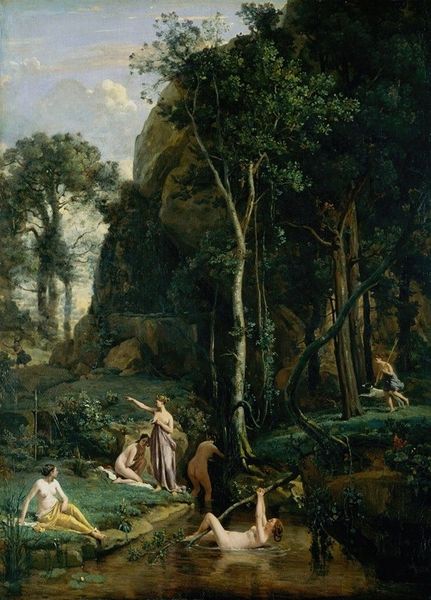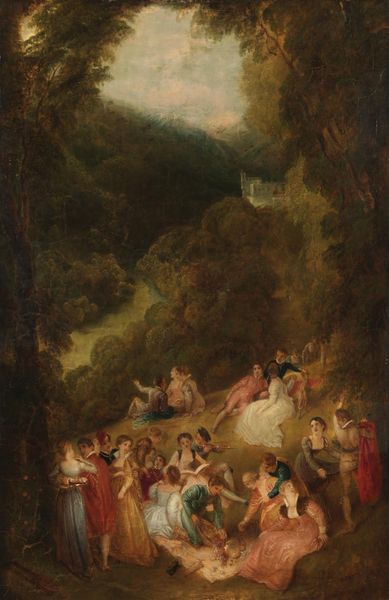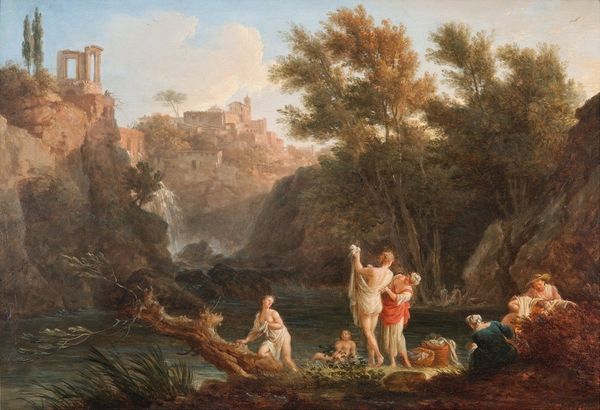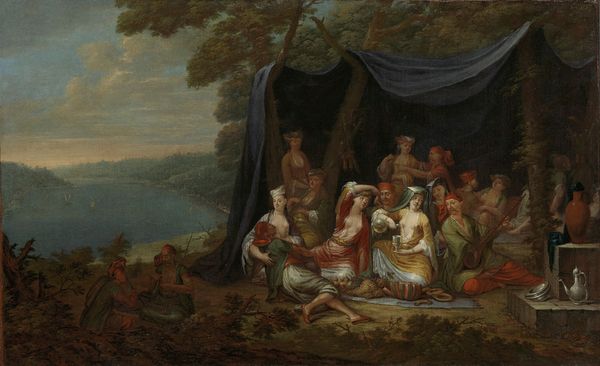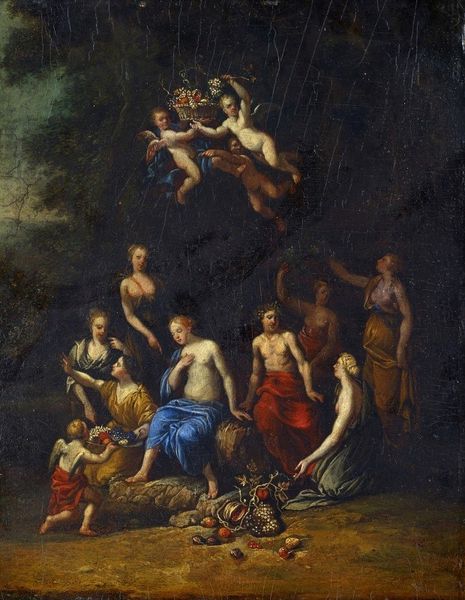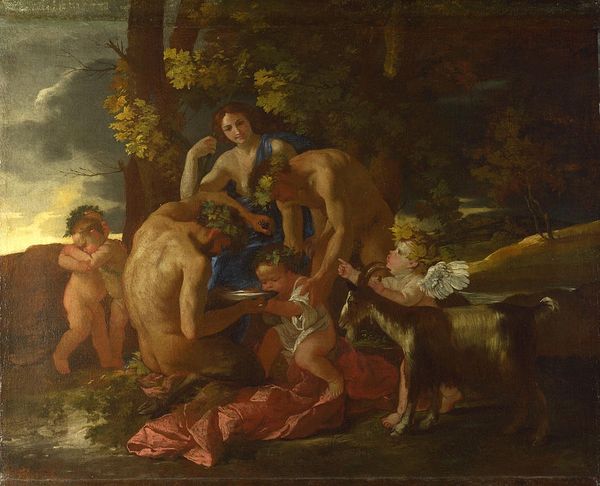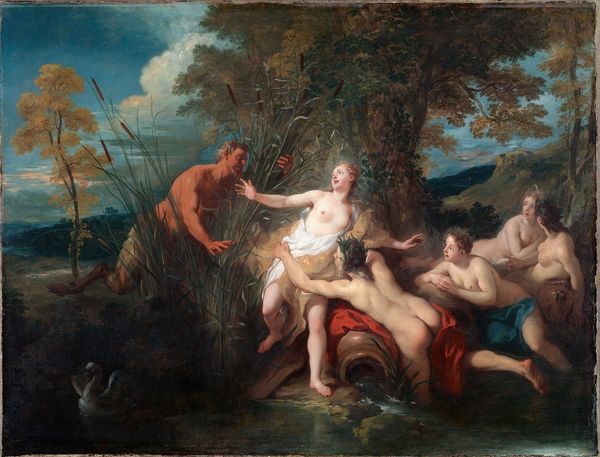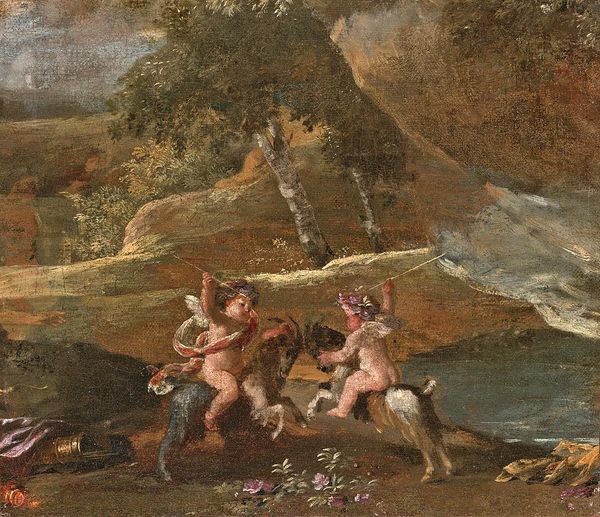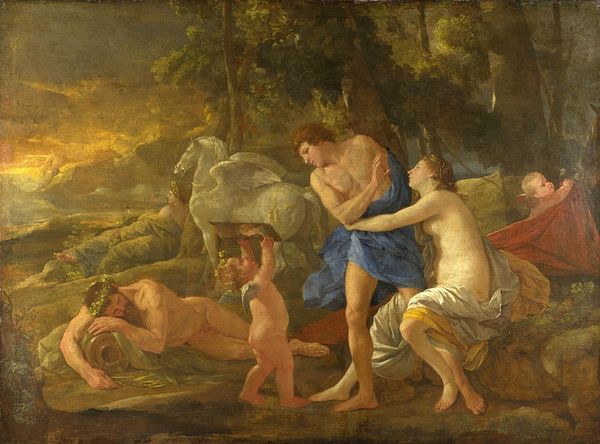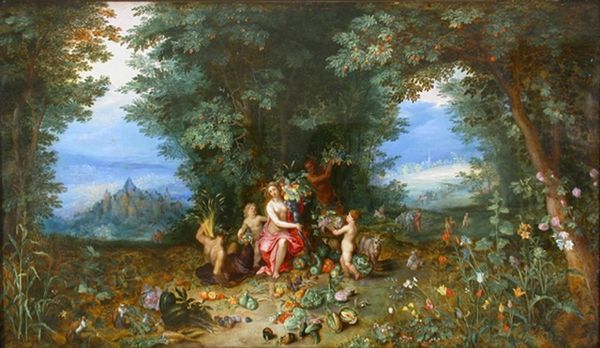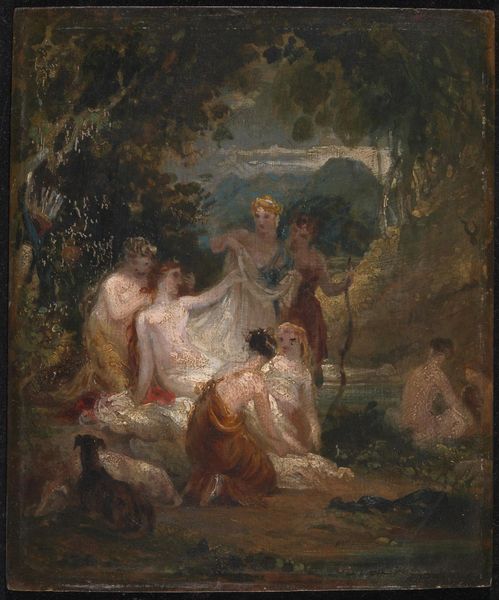
painting, oil-paint
#
narrative-art
#
baroque
#
dutch-golden-age
#
painting
#
oil-paint
#
landscape
#
figuration
#
oil painting
#
history-painting
Copyright: Public Domain: Artvee
Curator: Looking at this canvas, I'm immediately struck by the earthy tones – the browns, the ochres – and this single stream of water bursting from rock... feels almost desperate, doesn't it? Editor: That's a good starting point. This is Jan Steen's "Moses Striking the Rock," believed to have been painted between 1648 and 1653. Steen, known for his genre scenes, brings that sensibility to this Old Testament narrative. Curator: Known! A nice way of saying a bit too drunk and debaucherous for straight-laced history painting, usually. I bet he saw this as a chance to mix the sacred and the everyday. Imagine being that thirsty, huh? You strike a rock and BAM! Suddenly you’re blessed. Editor: It's far more complex than a thirst quencher, though. Contextually, you've got to remember the Dutch Republic at this time, its fraught religious landscape, the power struggles within and against the backdrop of colonialism… Curator: Colonialism and water... You’re right to bring it up. Water’s never just water, is it? Think about stolen resources, access… How it's rationed, sold… Steen’s figures jostling, eager with cups… Who gets what, and why? Is that child being held forward to get water offered special treatment or seen as burdensome? I guess it also gets at what happens when someone in charge gets what feels like unlimited access? Editor: Exactly! Who benefits, who is left out? Steen is using the familiar language of biblical narrative to question power dynamics. There's a social commentary at play here; looking at what narratives of exceptional leadership obscure in a political ecology. The composition emphasizes a clear visual divide. Moses up top as powerful benefactor of this new bounty striking down his gift on those scrambling at his feet. Curator: It feels… honest, even with the grandiosity of the event being portrayed. Not idealized. More like witnessing a chaotic miracle, less a carefully posed one. He clearly had his finger on the pulse. He saw how real folks relate to grand events or profound needs, perhaps. Editor: It encourages critical reflection on narratives that shape social hierarchies. Steen offers both a rendering of and perhaps even an important challenge to how history remembers acts of miraculous providence. Curator: Well said. And maybe, a tiny little question of how any of us should act towards our neighbors and towards strangers in difficult times.
Comments
No comments
Be the first to comment and join the conversation on the ultimate creative platform.
